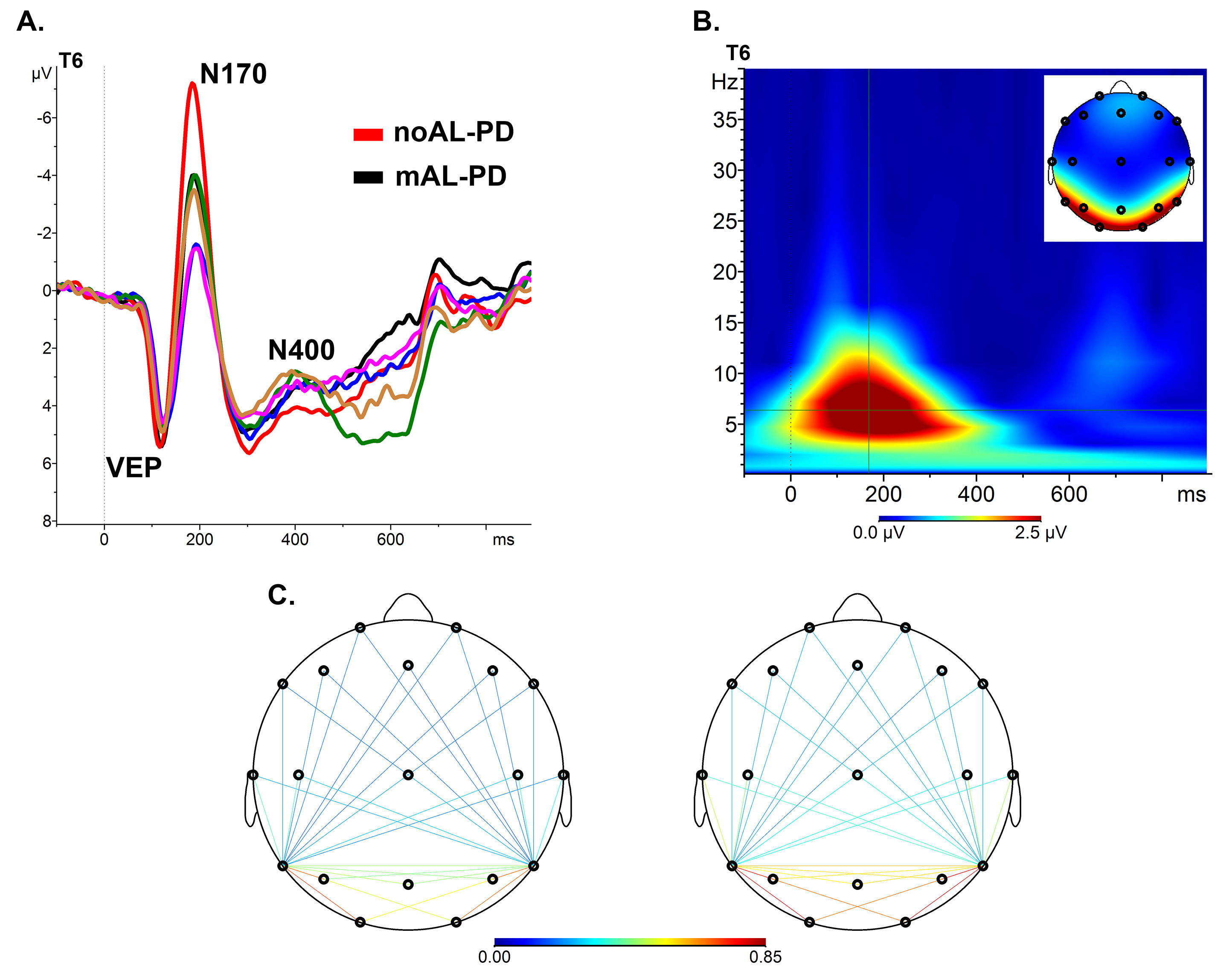Objective: To explore the neurophysiological dynamics of visual categorization in Parkinson’s disease (PD) with minor hallucinations.
Background: Different hypotheses have been proposed for visual hallucinations in PD, emphasizing the disruption of attentional and visual network systems. At the neurophysiological level, the abnormalities that could be associated with some of the processes related to these systems are unknown.
Method: We studied a sample of n=46 PD patients (mean age=66.9±7.7; mean disease duration=5.4±3.2) divided into with (mAL-PD) and without minor hallucinations (noAL-PD). A 19-channel EEG was acquired during performance of a visual categorization task were stimuli consisting on neutral objects, faces and face-pareidolia were randomly presented. Behavioral data analysis focused on success rate and reaction time. Neurophysiological analysis explored the morphology of early VEP, n170 and n400. Wavelet analysis was used to explore data in time-frequency domain and to determine the specific frequency band of interest. The task-dependent degree of frequency band association in specific channels was also explored.
Results: Groups were matched in terms of age, disease duration, education, cognitive status and medication. mAL-PD showed a significant lower success rate on facial pareidolia discrimination [t(26)=-2.01; p<0.05]. No differences were found neither in latency nor amplitude for the VEP. The mPD-AL group exhibited a significantly lower n170 amplitude at posterior sites (T5 and T6) in all the conditions. Wavelet analysis revealed a pattern of slow neural oscillations (0.5Hz – 7.5Hz) at temporal-parietal locations around 170ms. Functional connectivity analysis showed a loss of synchronization between T5 and T6 and several bi-hemispheric occipital and parietal sites. The degree of desynchronization was associated with lower n400 amplitude.
Conclusion: Visual categorization in mAL-PD is selectively compromised for ambiguous stimuli (face-pareidolia). This is accompanied by a decreased category-unspecific neurophysiological activity in critical nodes of the inferior temporal visual ventral stream and a concomitant loss of synchronicity between temporo-occipital and parietal sites. This sequence appears to impair later semantic retrieval and provides a model to understand the mechanisms subserving aberrant meaning attribution to ambiguous visual stimuli and subsequent misidentification.
To cite this abstract in AMA style:
L. Perez-Carasol, S. Martinez-Horta, A. Horta-Barba, A. Puig-Davi, J. Pagonabarraga, J. Kulisevsky. Neurophysiological architecture of visual categorization in early Parkinson’s disease with minor hallucinations [abstract]. Mov Disord. 2023; 38 (suppl 1). https://www.mdsabstracts.org/abstract/neurophysiological-architecture-of-visual-categorization-in-early-parkinsons-disease-with-minor-hallucinations/. Accessed December 26, 2025.« Back to 2023 International Congress
MDS Abstracts - https://www.mdsabstracts.org/abstract/neurophysiological-architecture-of-visual-categorization-in-early-parkinsons-disease-with-minor-hallucinations/

